Preface
Although a younger generation of filmgoers might vaguely know that some Russian guy inspired the train station shootout in the finale of Brian de Palma's The Untouchables, a remarkable film for all its homage, few probably know that the "Odessa Steps" sequence in The Battleship Potemkin by S. M. (Sergei Mikhailovich) Eisenstein revolutionized film editing, making it arguably one of the most important works in silent cinema. Potemkin, as many take to calling Eisenstein's second movie, had an immediate influence on filmmakers when released, and its guiding principles (and especially his theory of "montage") has had a lasting influence, not only on film editors, but writers, production designers, and directors to this day, Even television owes an enormous debt to Eisenstein's theories.
I was exposed to Eisenstein at the most important time in my life: my years of undergraduate study at Texas Christian University. I was the chairman of one of the nation's premiere film series during the 1960's, the decade that saw, in the U.S., enthusiastic embrace of all important European film movements in Italy (Neo-Realism), France (New Wave), and Spain (Luis Buñuel in exile), as well as both silent and sound films from the USSR, South America, India, Japan, the United Kingdom, and elsewhere: our film series was as essential to the education of the students as any of their courses. Sadly, although many came to our "Foreign Film Series," many, many more attended screenings of the alternative series of "Popular Films."
Although hardly new to film as an art form, I had the input of some brainy, knowledgeable classmates, including John W. Gaston and Bryce Harberd and, together, we screened Strike, The Battleship Potemkin, Ten Days That Shook the World, Alexander Nevsky, and Ivan the Terrible, Parts One and Two. These movies were shown in a large second-story ballroom of a studion union building since torn down. We had an old 35mm arc lamp projector that made as much noise as the movie dialogue, so, for the silents, we were happy to find that silents came with some music at least.
No filmmaker whose work we saw influenced me quite so much as Eisenstein. I knew I wanted to go to film school after seeing his Ivan. (I might not have gravitated to the film committee at TCU had it not been for exposer, a few years earlier, to Orson Welles' Touch of Evil, but that is another story.) No film I had seen prior to Potemkin had such unity of composition and cutting -- not just two shots clipped together, but a deliberate, scientific use of what cineastes at the time were calling, after Eisenstrein, the mise-en-scene, as well as the timing of the film clip. Whether by accident or design, Eisenstein had stumbled upon the very thing that moviegoers take away from Psycho: the certainty that Janet Leigh has been stabbed to death in a motel room shower by a female in black.
In fact, no such claim may be made. A shot by shot analysis of the notorious shower sequence in Psycho reveals that (1) the woman is very probably a body double, (2) the knife never touches her skin, much less punctures it, and (3) the blood going down the drain is not Janet Leigh's but came from a tube or bottle, popularly known in the trade as "Technicolor blood," although, of course, Psycho was shot in black and white. My point is, simple, that the shower scene is pure Eisenstein. Whether you call it the "montage of attractions" or "Hegelian cutting," or simply, as did Hollywood, "montage," it boils down to the same thing: creating image "C" from the violent juxtaposition of image "A" and image "B."
As I recall, one of the ongoing debates we film buffs lapsed into now and again, was whether Eisenstein had put the chicken or the egg first: that is, did he shoot his movies and then formulate his theories of dialectical montage, or did he form the ideas, then shoot his pictures. Film Form and The Film Sense, the two of his works then available in the U.S. from Grove Press in New York, with Eisenstein's esoteric references to Chinese pictograms and other anthropological equivalents, did nothing to answer the question. Indeed, although plain spoken, these essays seemed almost impenitrable.
Parsimoniously, we may be "So what?" We do not have to understand Eisenstein's theories to appreciate his work. Eisenstein was a zealous communist who believed with all his heart Marxist theory, and especially that element of Marxism based up Hegel. Hegelian theory supported a new kind of aesthetic. The cinema that grew out of that aesthetic was agit prop. Strike enabled and emboldened: that was the "purpose" of cinema. But one of the themes I would like to explore, is that it also "fit" Eisenstein's mysterious psyche: the psyche of the repressed (yet sublimated) homosexual.
From the intertwined arms of beefy workers in Strike to the cross-dressing Oprichniki in Ivan, Eisenstein let his innate queerness guide his choice of players, his compositions, his use of human body forms, and even, when sound was added, his choice of words. This essay aims to illuminate the ways in which Eisenstein, an avowed Freudian, sublimated his homosexuality into his work, and how infused was the latter with his strange ideas about human sexuality. It will necessarily delve briefly into his childhood -- briefly because of the author's tendency to put some credence in the theories of transactional analysis and especially the notion that we each carry inside us our child, our self, and our parents.
+(2).jpg)
.jpg)
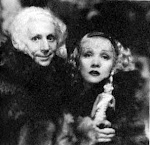+(3).jpg)
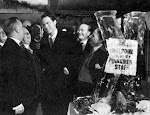+(4).jpg)
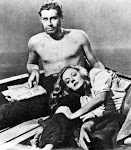+(7).jpg)
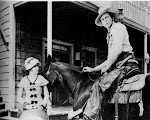.jpg)
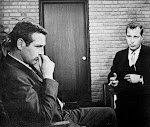+(6).jpg)
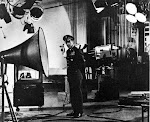+(5).jpg)
.jpg)


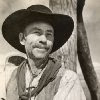




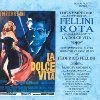

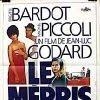

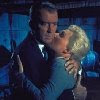
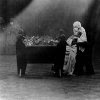
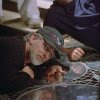





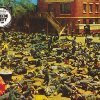

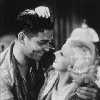


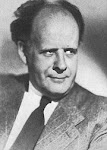

















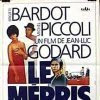
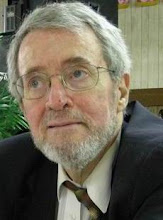

No comments:
Post a Comment